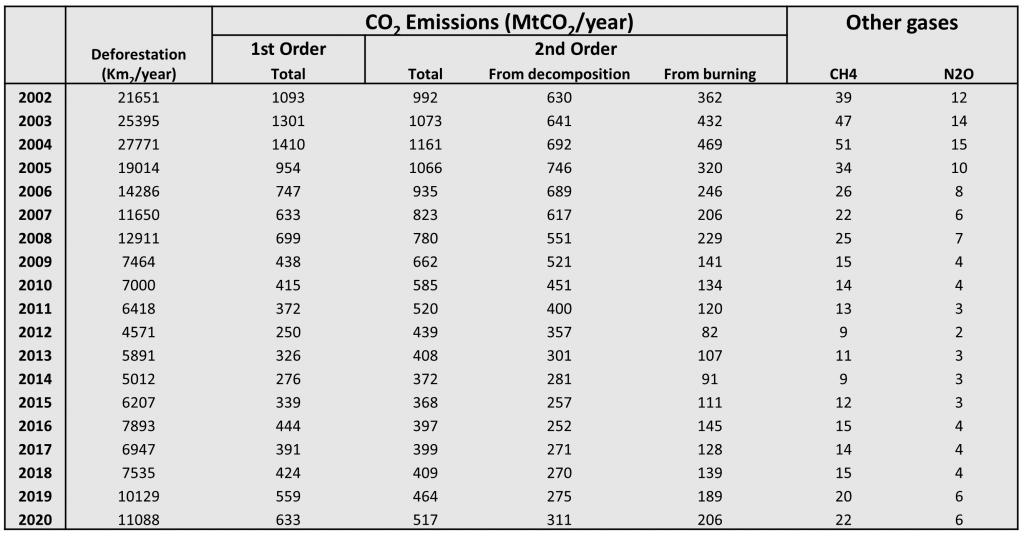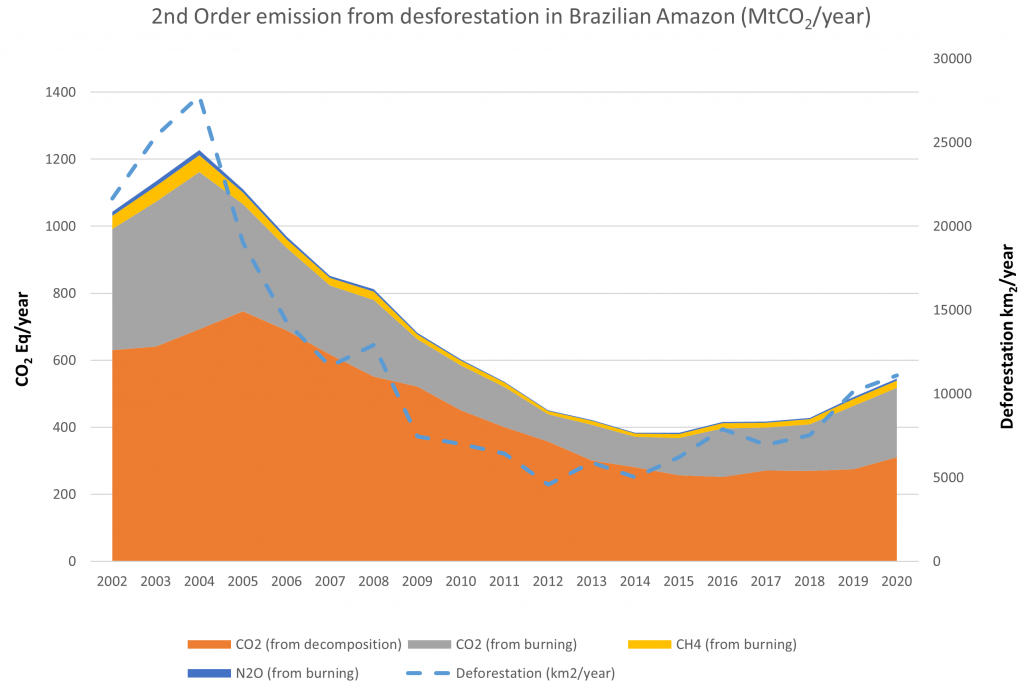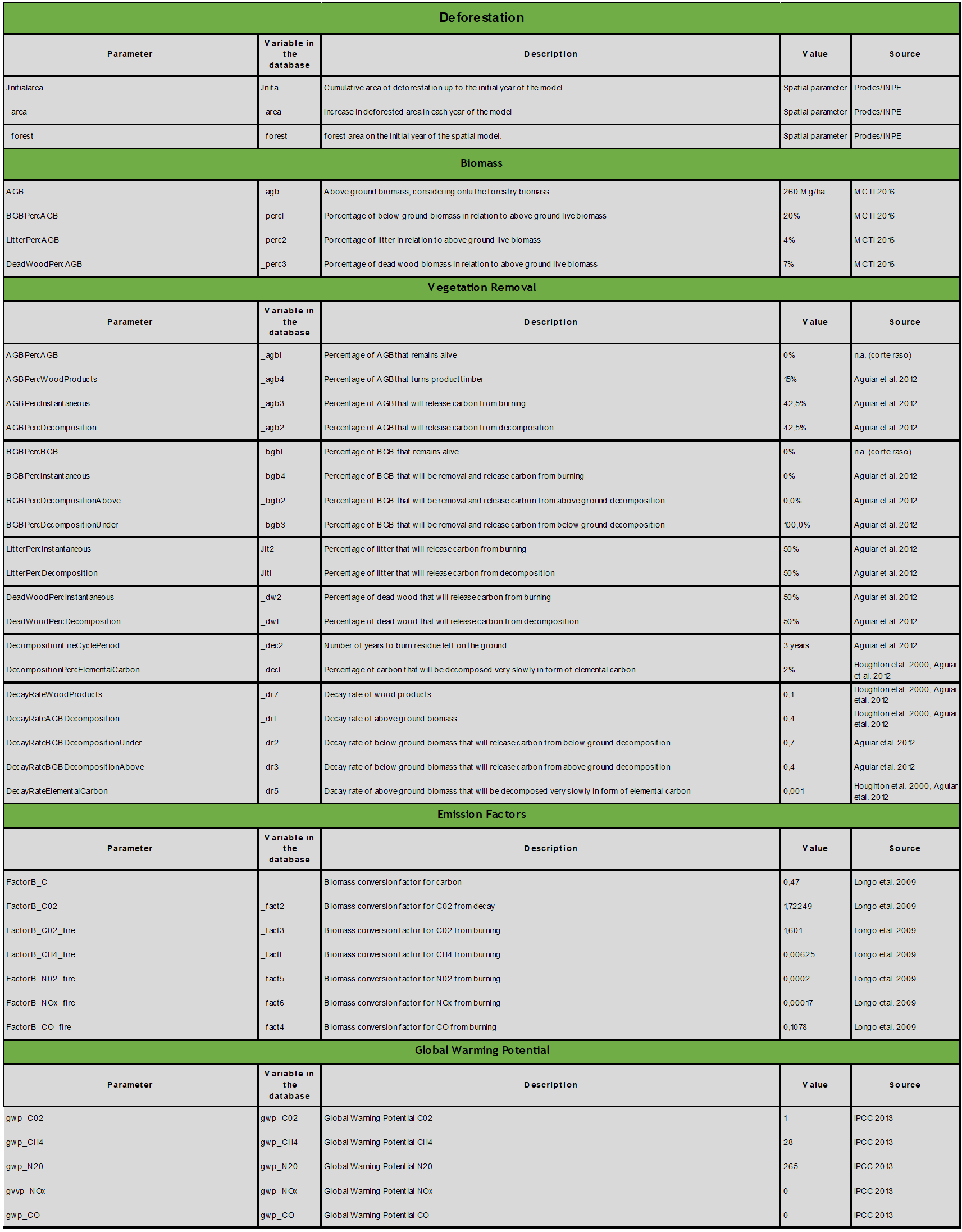The table below shows gross emissions estimates of 1st and 2nd order for clear cut deforestation areas in the Brazilian Amazon (according to the mask PRODES System). The estimates use spatially explicit data and detailed parameters below.
These estimates only consider the tropical forest clear-cut in the Brazilian Amazon. Thus they do not include emissions from the removal of other vegetation types, especially the cerrado vegetation found in the States of Tocantins, Mato Grosso and Maranhão. The estimates also do not consider emissions resulting from forest degradation processes.
For the estimates of 2nd Order, the total time scale of the model is from 1960 to 2016, as the effects of the emissions from decomposition of the previous years are considered. The 2nd Order of emissions estimates have an attenuated response in relation to deforestation rate fluctuations (rises and falls), as they carry the influence of historical emissions, i.e. the decomposition/ burning processes of the remaining biomass of deforestation occurred in previous years. The 2nd Order estimates are therefore more accurate and have greater scientific basis for studies on the carbon cycle. The 1st Order estimates are typically used to report emissions in a more simple and intuitive way. Estimates for the entire period and for all gases are available for download.
The following parameters were used for the estimation. Click here to download from the table below.
Although the biomass data represent the largest source of uncertainty for emission estimates (Aguiar et al., 2012, Ometto et al. 2014 Michard et al, 2014), the definition of all the other parameters mentioned above also bring uncertainties. Scientific advances are required to support the improvement of the parametrization in Amazon and other regions.




